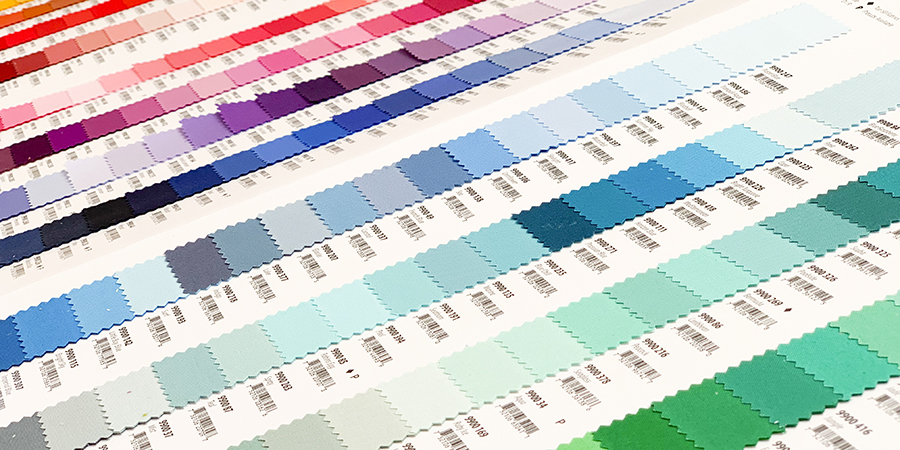Plain-colored patchwork fabrics and patchwork fabrics with a subtle tone-on-tone pattern are the basis for modern quilts, because they let the pattern (the English word “pattern” says it much better) come into its own. The design appears graphically modern and gives a room with a modern quilt something bright and spacious. Uni-colored patchwork fabrics are referred to as solids and are also named as such by the fabric manufacturers, e.g. B. Moda Bella Solids . Patchwork fabrics with a subtle tone-on-tone pattern are called blenders, e.g. B. the “Blender Fabric Collection” by Art Gallery Fabrics.
What are modern quilts?
In art there are clear demarcations between the different styles and epochs. That doesn’t exist in patchwork and quilting. Nevertheless, a modern quilt has certain design characteristics, including:
Strong colors
The selection of colors is not only one of the most important aspects of design in art and design, it also plays an extremely important role in patchwork. Patchwork fabrics in modern quilts often feature bold colors and are combined with white or grey.
Clear contrasts
Modern quilts often show clear contrasts both between the fabric colors and in the patchwork blocks themselves, i.e. the arrangement of the sewn pieces of fabric. These are often designed in large rather than small parts in order to clarify the effect of patterns and colors.
graphic elements
Of course, the leaf of a flower is ultimately a graphic element, but modern quilts are based on the basic geometric shapes of points, lines, triangles, squares and circles. These are often combined in a balanced way in terms of design and are in dialogue with each other.
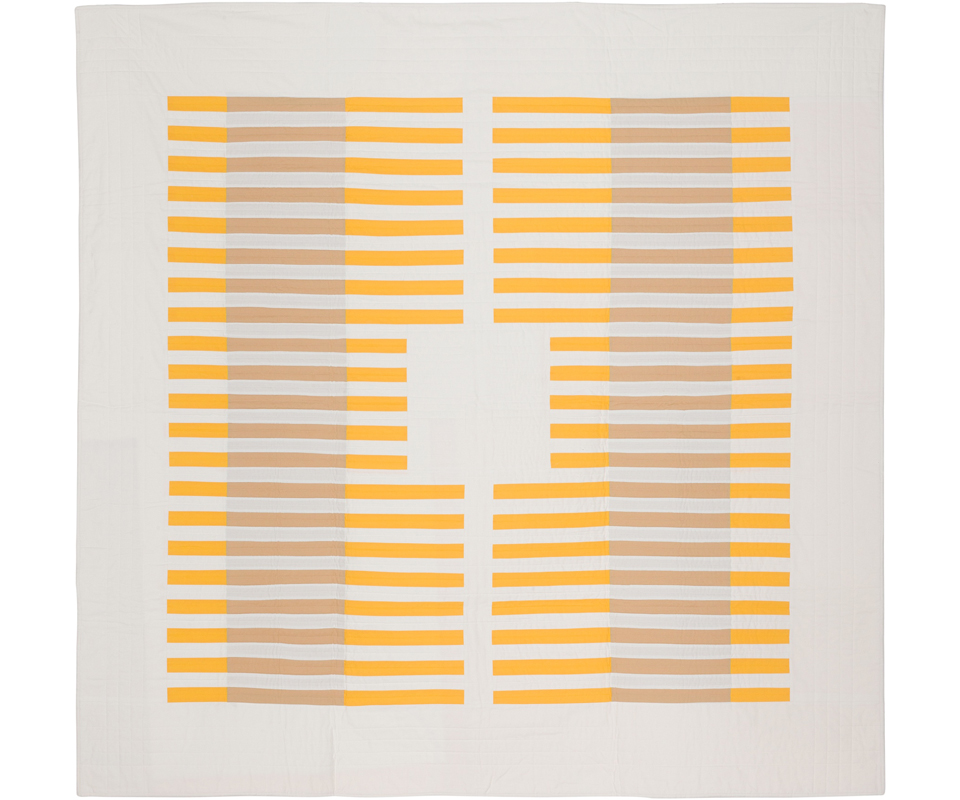
Negative Space
In art, photography and graphics one works consciously with positive and negative space. Positive space is the actual motif, for example the individual block in patchwork. In modern quilts, the “negative space” is the fabric between the individual blocks or the background fabric in the block itself, for which a so-called blender or solid is chosen.
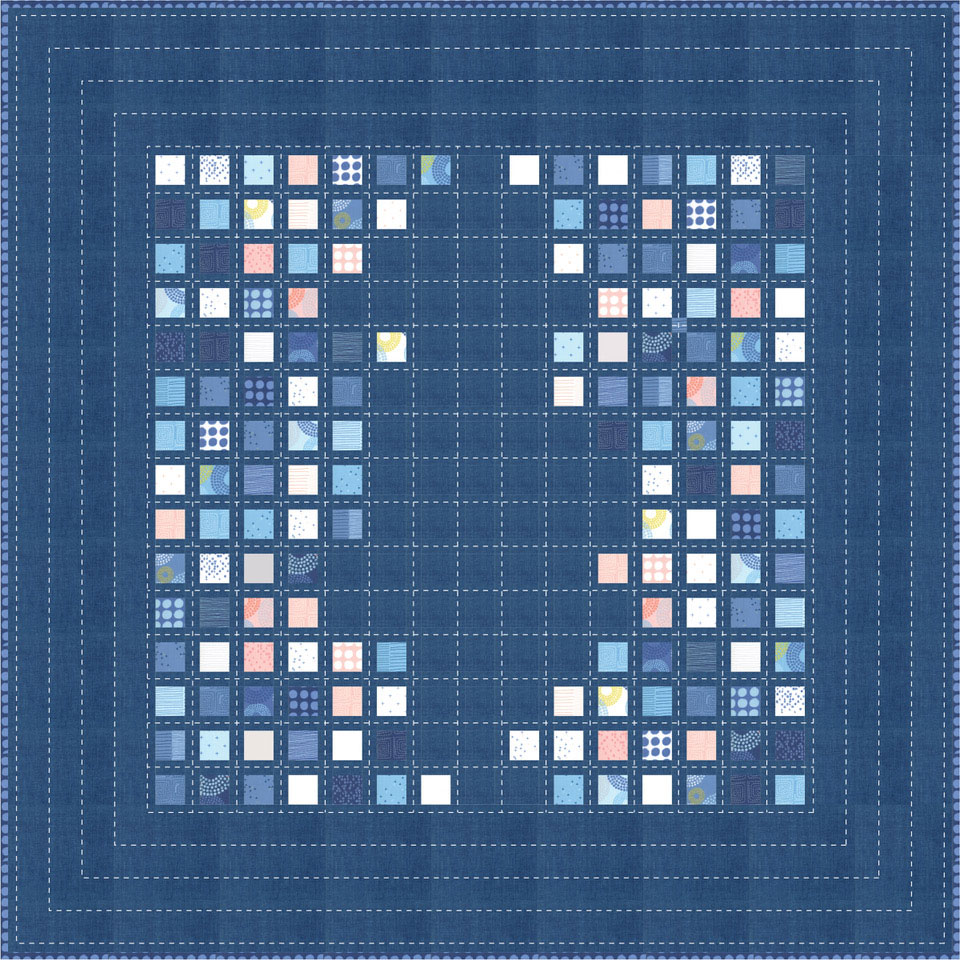
minimalism
For some, minimalism is an art form, for others it is a philosophy of life. Minimalism also means creating space for the essentials. Modern quilts show their design features clearly and distinctly – reduced to the essentials.
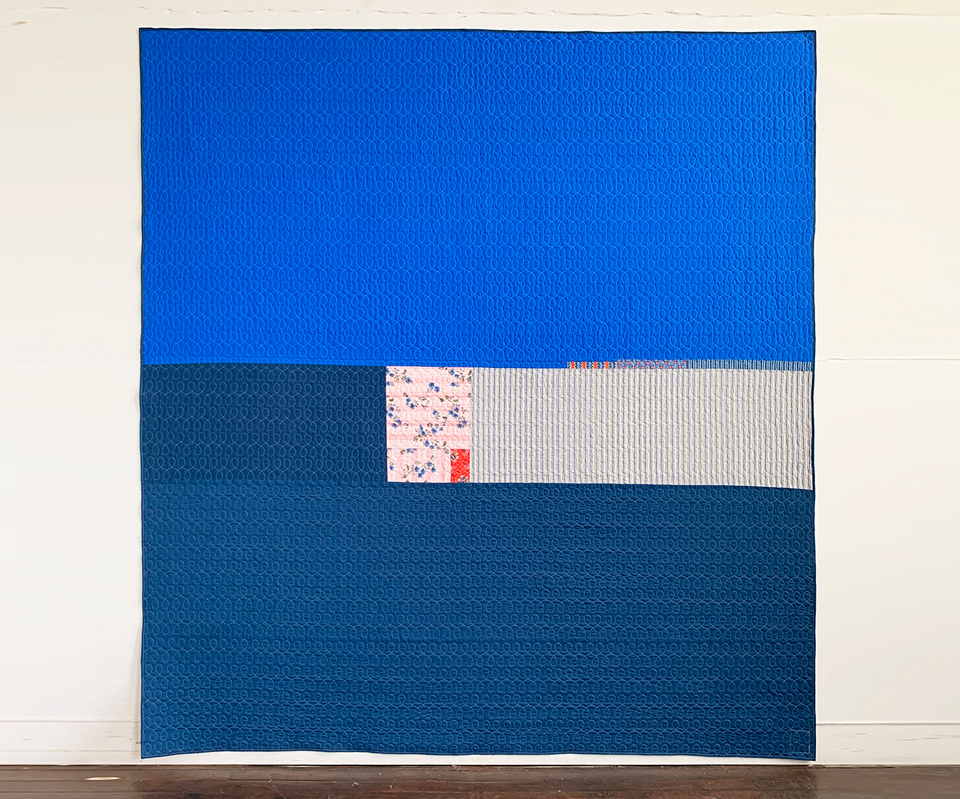
Optional: improvise piecing
Without exact instructions for the individual blocks, you cut pieces of fabric partly freehand and intentionally “wonky” (translated: wobbly) and let your quilt grow organically. But there is structure and a basic principle here too: the individual blocks can be improvised, but afterwards they can be trimmed back to the same size.
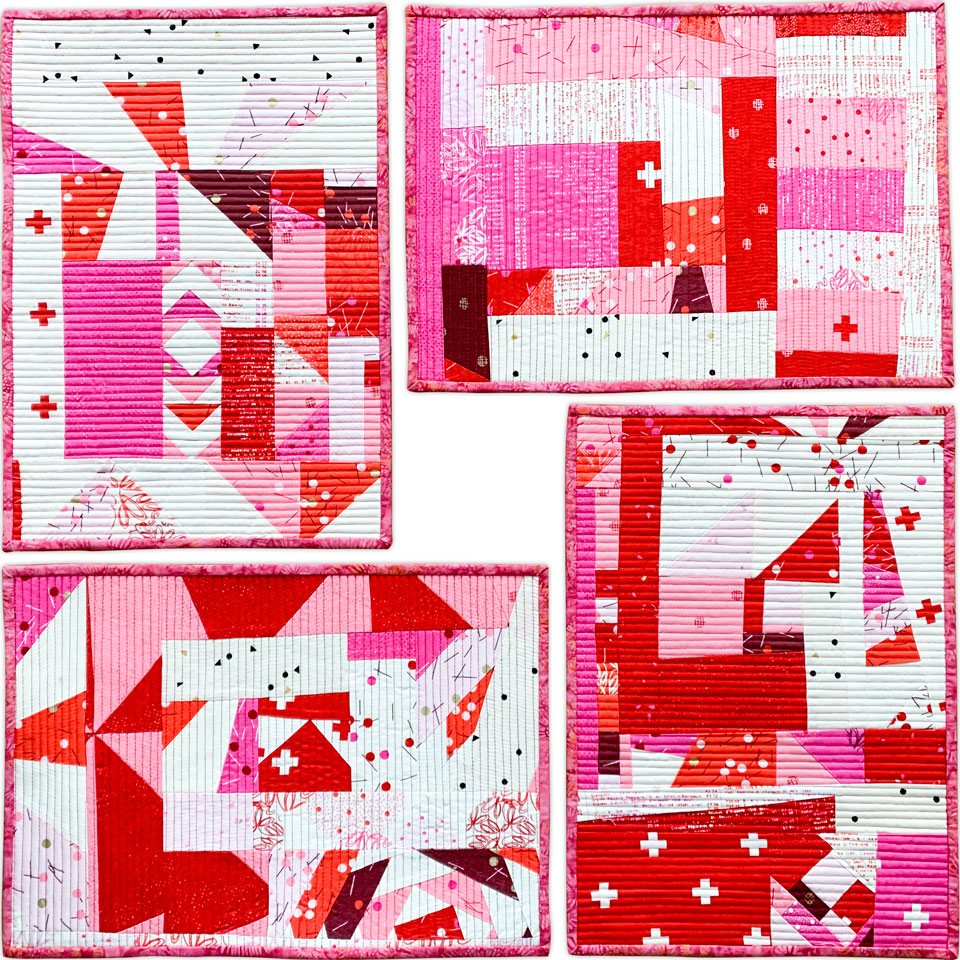
Modern quilters
It wasn’t until the 2000s that modern quilts began to gain traction and women quilters around the world began calling themselves “modern”. There are so many women designers that I admire and I would like to name a few that inspire me over and over again:
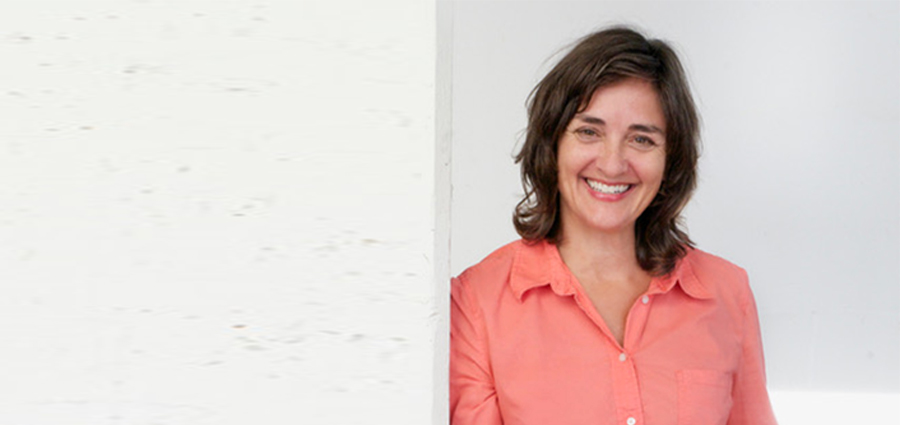
Denyse Schmidt (Klick)
Denyse Schmidt is an American quilter and textile designer whose love of fabric and sewing was deeply rooted in her childhood. She grew up in Massachusetts, where there were many textile mills and outlet stores – her mother’s shopping there is a vivid childhood memory.
For her quilts she concentrates intensively on the design process and usually has her designs made by trusted seamstresses. She experiments with both hand and machine quilting and uses this design aspect depending on the desired expression. Denyse Schmidt sketches her ideas with a pencil on paper in order to then further develop the quilt “on the wall”. Her designs tend to be minimalistic but colourful, her choice of colors always intuitive without sticking to color theories.
As a textile designer, she has designed collections for well-known fabric manufacturers.
Denyse Schmidt is an inspiration for me because she develops her quilts freely and intuitively and has the unconditional courage to experiment, I just take my hat off to that!
Web: dsquilts.com | Instagram: dsquilts | Photo: Gale Sugar
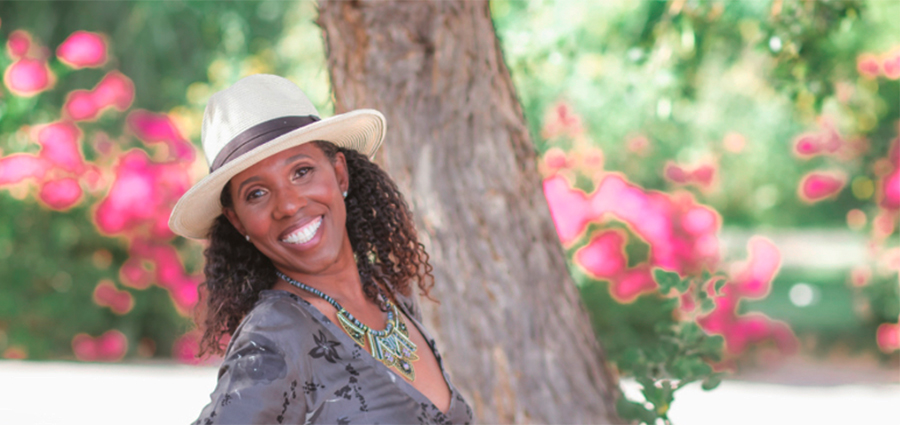
Sandra Lee (Klick)
Sandra Lee is an American textile artist who began quilting in the 1990s. Her very own style is characterized by the processing of different fabrics, which she likes to use in the Boro technique and refines with Sashiko. Sandra is also known for her denim clothing: she refines denim jackets with sashiko patches and patches and works patchwork pieces into jackets, dresses and trousers.
Sandra Lee is an inspiration for me because she lives her quilts and clothing herself and seems incredibly cool and full of life. Jeans blue is good for my eyes every day and I can look at Sandra’s works again and again!
Web: sandrajohnsondesigns.com | Instagram: sandraleedesign
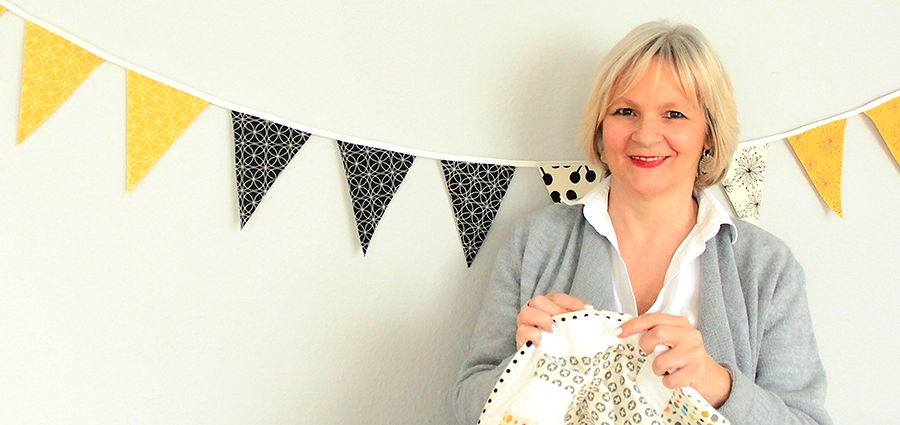
Brigitte Heitland (Klick)
Brigitte Heitland is a German textile designer and quilter from the Black Forest and has been sewing since she was six. She first studied interior design, but then switched to textile design. Brigitte Heitland is a designer for Moda Fabrics and creates fabric collections under the Zen Chic label, which are characterized by their very own signature – every quilter who has used one of her fabrics immediately recognizes when she has a different design from a Zen Chic collection in your hands!
Her quilts are characterized by clear, reduced designs, whose conception using “negative space” shows a clear style. The reduction to the essentials always goes hand in hand with a balanced color composition, whereby the chosen colors are often contradictory, but always harmonize.
Brigitte Heitland is an inspiration for me because she combines all areas of patchwork design: textile and quilt design. I also really appreciate the way her work is presented, because she always presents her quilts in the context of a room, thereby supporting my own imagination.
Web: brigitteheitland.de | Instagram: zenchicmoda
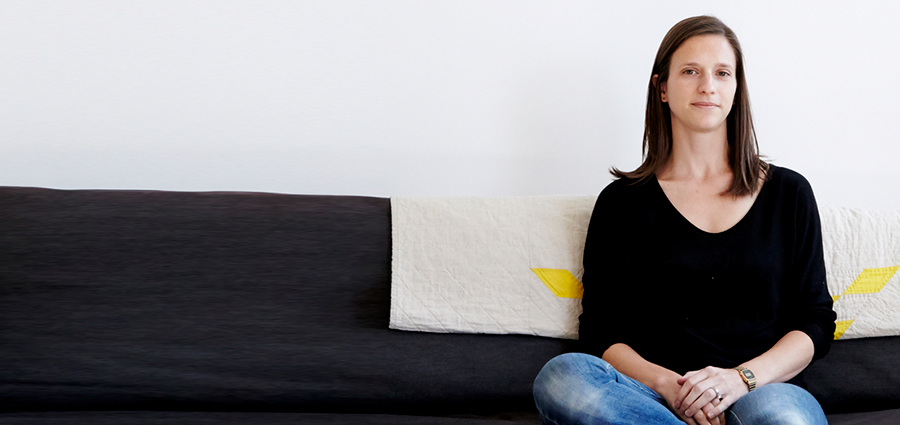
Season Evans (Klick)
Season Evans is an American quilter from Pennsylvania and was heavily influenced by traditional quilt patterns she saw as a child. Living in different places has enriched her creativity and she uses this to adapt and break traditional patterns. In her quilts, she dedicates herself intensively to a specific design feature and develops it further over several works. A striking feature of Season Evans quilts are the backs, to which she pays as much attention as the fronts. The artistic expression here shows a second side that is in dialogue with the front and at the same time opposite.
As modern as her designs are, the quilts are made in a traditional way – the craft as a means of storytelling is just as important to her as the material used.
Season Evans is an inspiration for me because her quilts with the front and back are like an evolution of the work of Anni Albers and Gunta Stölzl, the two great textile artists of the Bauhaus.
Web: sdevans.com | Instagram: sdevans | Photo: Mikael Kennedy
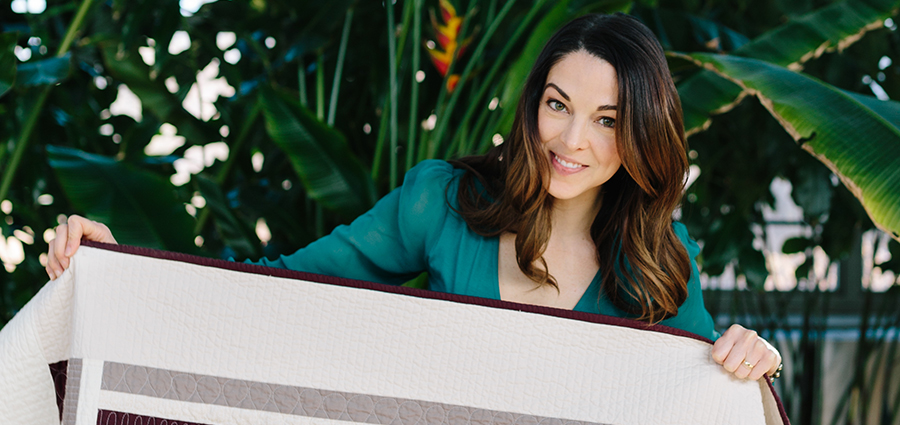
Suzy Williams (Klick)
Suzy Williams discovered the magic of sewing at age 15 from Brenda Winkelmeyer, a friend’s mother, who taught her the basics of quilting. Suzy is a communication designer, but now her passion for modern quilt design is her full-time job. She is one of the best-known bloggers in our scene, not least because she allows generous insights into her private life. Suzy’s designs are mostly large and modern, very graphic and colourful. She mostly uses Blender and Solids.
Suzy Williams is an inspiration for me because she has a clear signature in her design. And also because it is so successful in its entire advertising concept and marketing.
Web: suzyquilts.com | Instagram: suzyquilts
- Yoshiko Jinzenji yoshikoquilt.com
- Kiva Motnyk thompsonstreetstudio.com
I will gradually introduce some of them here in the blog.
Plain patchwork fabrics: what are solids and blenders?
This is answered very quickly:
- Solids are single-colored patchwork fabrics, e.g. B. Moda Bella Solids – there are great quilt designers who work exclusively with solids
- Blenders are patchwork fabrics with patterns, but the colors are tone-in-tone and, from a distance, can also appear monochromatic. Blenders are not in the foreground and optically support the effect of the patchwork

Why I love solids
As a communications designer and advertising service provider, I often have to be “louder” and more garish than I would actually like. I actually love abstract, geometric layouts and a minimalist design. I can then design the patchwork the way I want it – reduced, with my color preferences, sometimes cheerful and sweet, but always with few design features!
Plain patchwork fabrics are the salt in the soup for me. They give a quilt design the necessary calm and there is something classy about them because they don’t stand out. Their extensive range of colors is an enrichment and I guard my Moda Bella Solids fabric card like the apple of my eye. It’s always incredibly fun to choose a solid for a patterned fabric.
